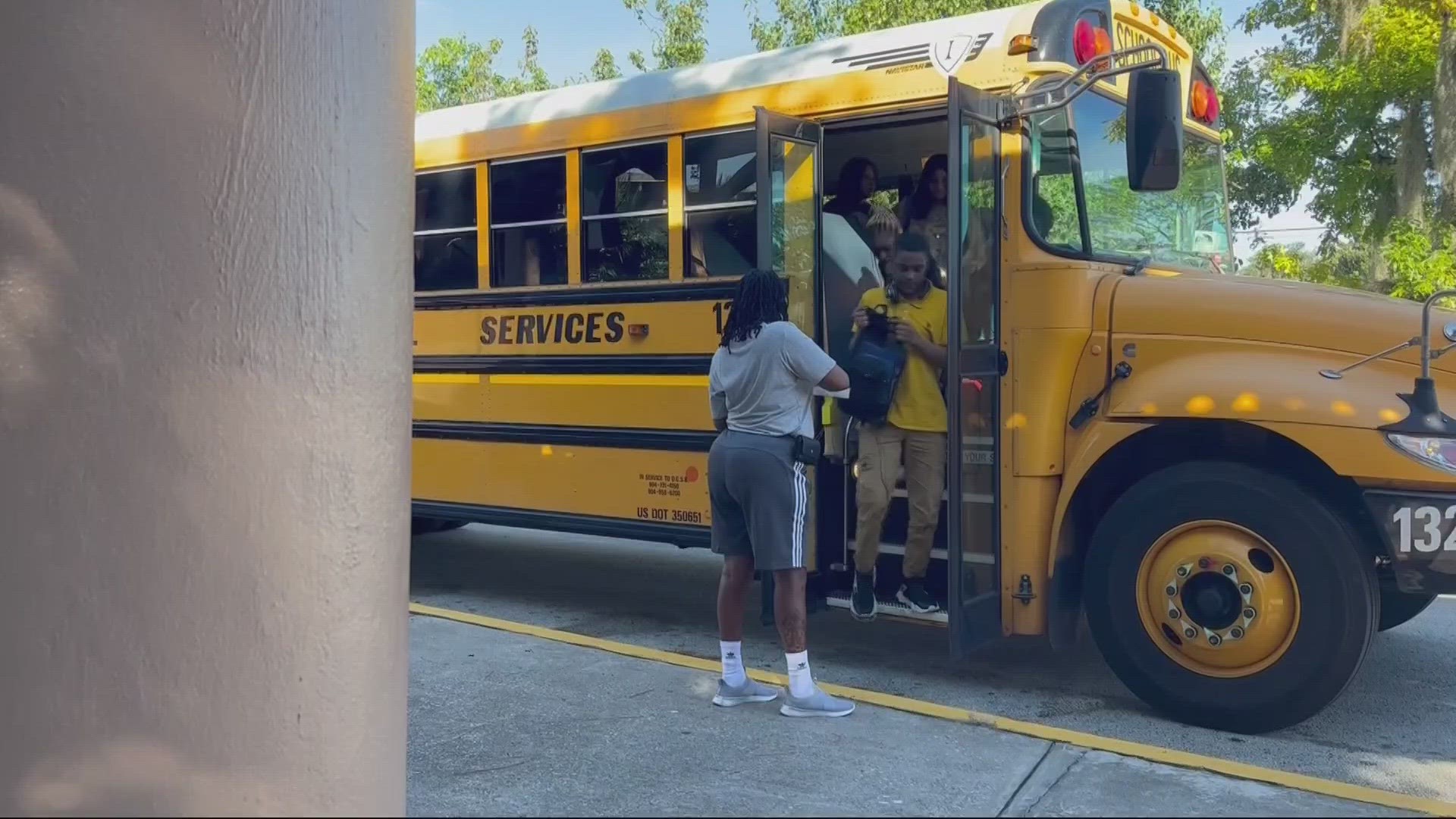JACKSONVILLE, Fla. — A yellow school bus is something you probably see every day on your drive to or from work. It’s become a classic representation of the American school system, but is there intention behind the design?
Bob Douce shared a Facebook post. It says “The three black lines on the school buses serve a purpose. The bottom line is the floor of the bus. The middle line is the seat line. The top black line is the top of the seats. These lines of the bus are reinforced, but they also let firefighters know where to cut in case of an accident.”
QUESTION: Are the black lines on a school bus for firefighters to know where to cut into in the case of a crash?
ANSWER: While that is not their purpose, they could help inform firefighters. But this needs more context!
SOURCES:
- Captain Eric Prosswimmer with Jacksonville Fire and Rescue
- Student Transportation of America
- Florida Department of Education
Prosswimmer explains that the main purpose of the black lines is not for them to know where to cut, but it could help. The black lines are called rub rails.
According to Florida DOE Bus Specifications, rub rails are required on all buses. They must be black and they must be on specific areas of the bus: at seat level, floor line and bottom of the outer skirt.
A spokesperson for Student Transportation of America, which provides buses to school districts around the country, sent a statement saying “While the lines generally line up with specific areas on the school bus, their main purpose is protection in the event of side impact or rollover.”
Prosswimmer says if a school bus was involved in a crash, firefighters would prefer to use the emergency door on the back or the emergency windows.
He tells me if necessary, the rub rails could inform firefighters on where to cut into the bus because they identify structural members, but that is not their purpose.
Do you have a claim or question you would like verified? Email us at verify@firstcoastnews.com.

